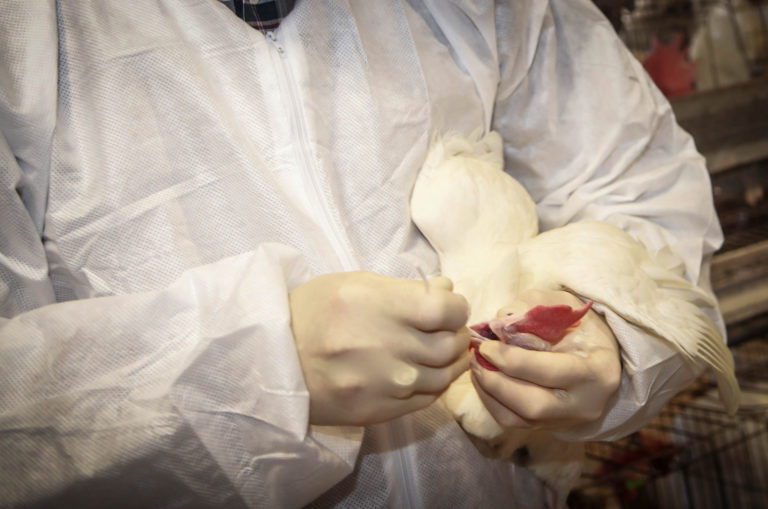



New project to develop rapid response methods for avian influenza A
Texas A&M Veterinary Medical Diagnostic Laboratory is leading the effort to develop rapid next-generation sequencing to detect avian influenza A viruses
© Texas A&M Veterinary Medical Diagnostic Lab
Through a newly funded project, the Texas A&M Veterinary Medical Diagnostic Laboratory (TVMDL) is leading the effort to develop rapid next-generation sequencing procedures to assist in the detection and characterization of influenza A viruses, IAV, in avian species.
Kiril Dimitrov, DVM, Ph.D., TVMDL virology section head, Bryan-College Station, will serve as the principal investigator for this project with David Suarez, DVM, Ph.D., research leader at the USDA’s Southeast Poultry Research Laboratory (SEPRL) and Diego Diel, DVM, Ph.D., director of virology at Cornell University’s Animal Health Diagnostic Center (AHDC) serving as co-principal investigators. Pam Ferro, Ph.D., TVMDL molecular diagnostics section head, Bryan-College Station, and Patrick Mitchell, Sc.D, AHDC bioinformatics analyst, are serving as co-investigators.
Funded by the Agricultural Improvement Act of 2018 through the National Animal Health Laboratory Network (NAHLN), this $300,000 project aims to develop rapid and reliable next-generation genetic sequencing to identify influenza A viruses in birds and predict their pathogenicity. The project also plans to develop methods of analyzing biological data or bioinformatics.
“The $46.3 billion poultry industry is a thriving part of the U.S. economy, but infectious avian diseases continue to be a threat to its sustainability,” Dimitrov said. “Among these, avian influenza, caused by influenza A viruses, is of great economic and social importance.”
Benefits of next-generation sequencing
Next-generation sequencing is a broad-term for modern high-throughput methods used for genomic and genetic research. Such methods allow for accurate, rapid and cost-effective detection of a pathogen’s DNA or RNA in biological samples and characterization of the identified pathogens.
By establishing new sequencing methods, veterinary diagnostic laboratories such as those in NAHLN may be better prepared to detect influenza A virus outbreaks in poultry and facilitate the control of disease outbreaks.
Impact of influenza A viruses in poultry
Two categories of avian influenza, highly pathogenic avian influenza A and low pathogenic avian influenza A, are among the most important poultry and wildlife diseases. Historically, the highly pathogenic influenza viruses have devastated entire poultry flocks, leading to severe economic losses to the poultry producer and potentially impacting the food supply. For example, the USDA estimates the 2014-2015 highly pathogenic influenza outbreak resulted in the deaths of over 50 million chickens and turkeys and totaled approximately $879 million in federal expenditures.
Looking toward the future of diagnostics
Currently, several well-established diagnostic tests and procedures exist for avian influenza detection. However, these tests are target-based, were developed using only currently known genetic information, and may not detect emerging, undiscovered pathogens. Rapid and accurate detection of new viral introductions are instrumental to containment measures and outbreak control.
“The existing routine assays do not provide pathogenicity, subtype or other valuable epidemiological information,” Dimitrov said. “These challenges could be overcome with the use of next-generation sequencing technologies, which provide the means for rapid and simultaneous detection, pathotype identification, and genetic characterization of pathogens.”









